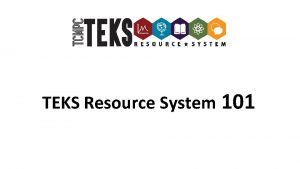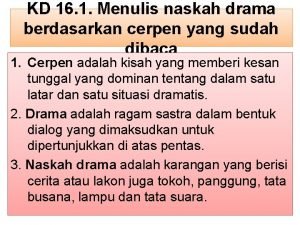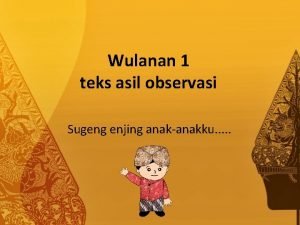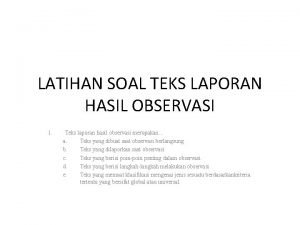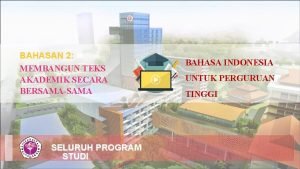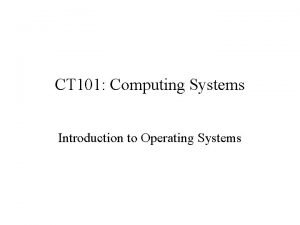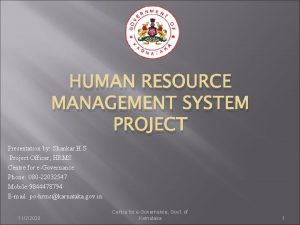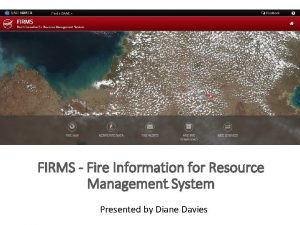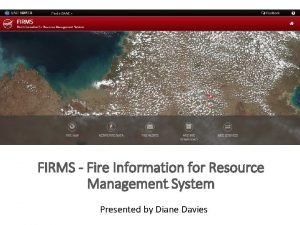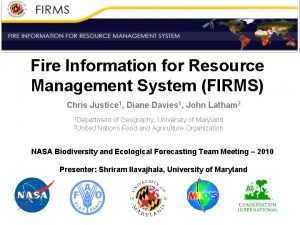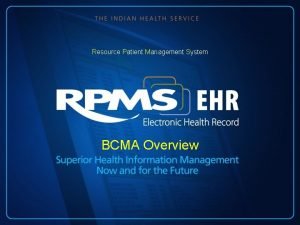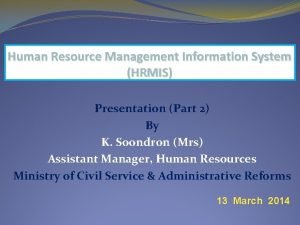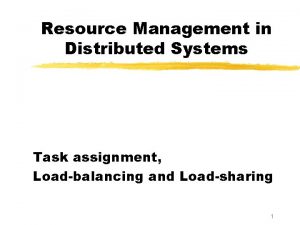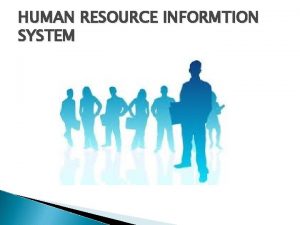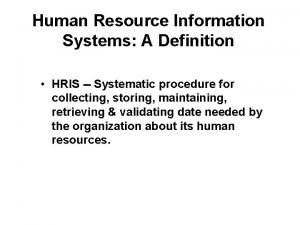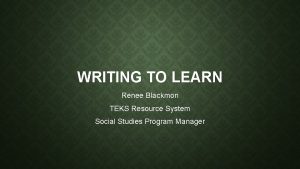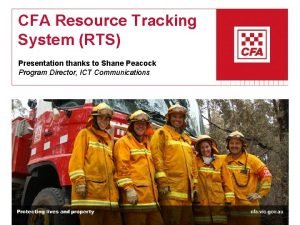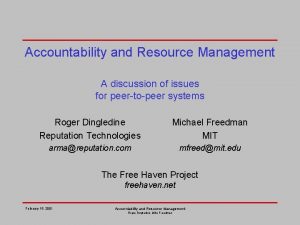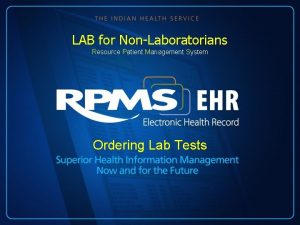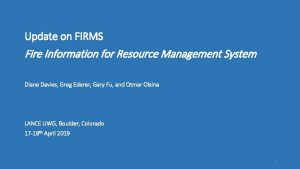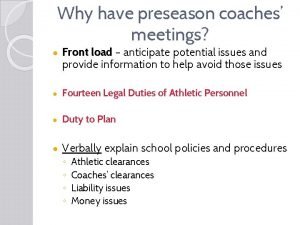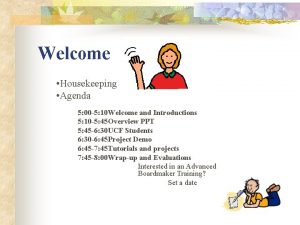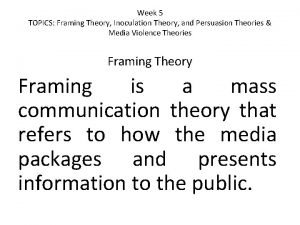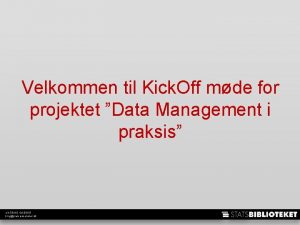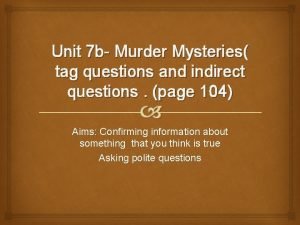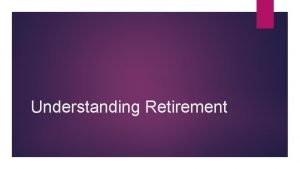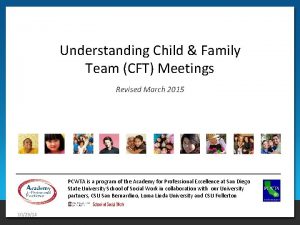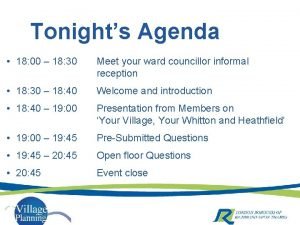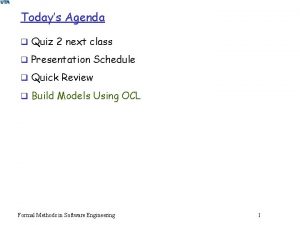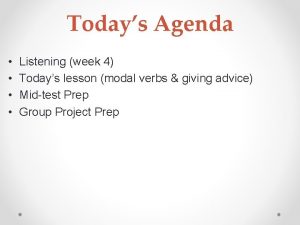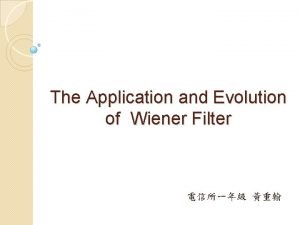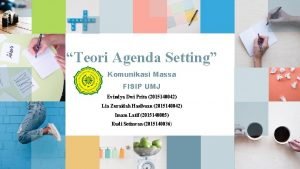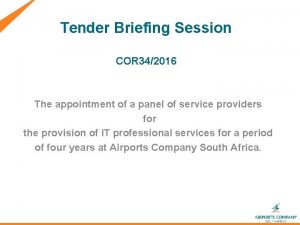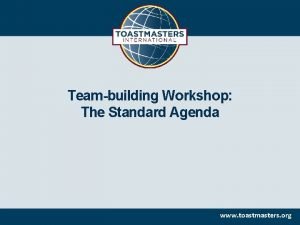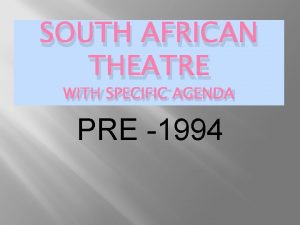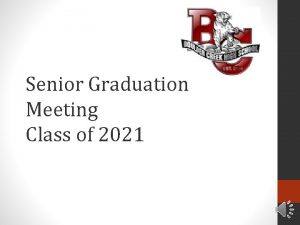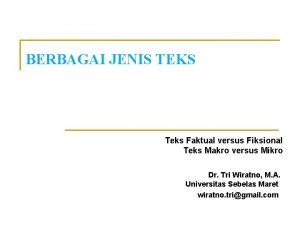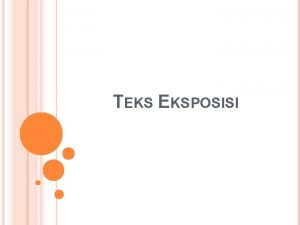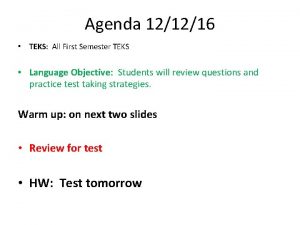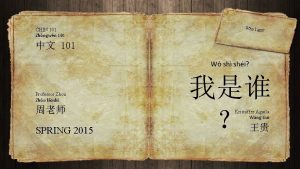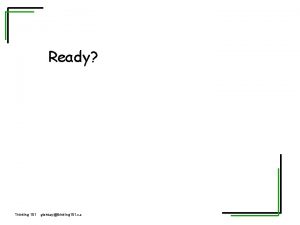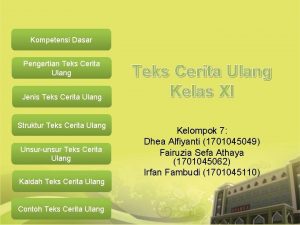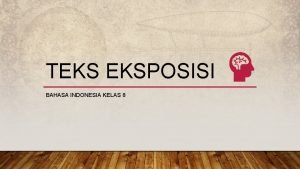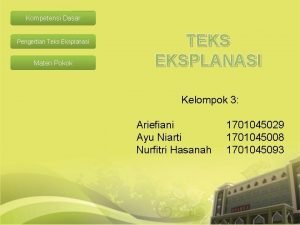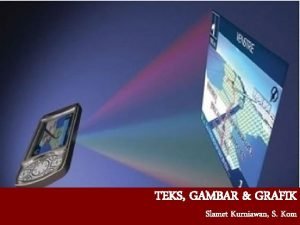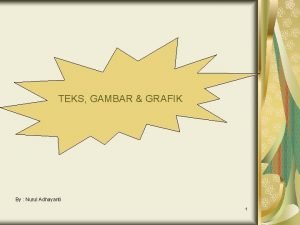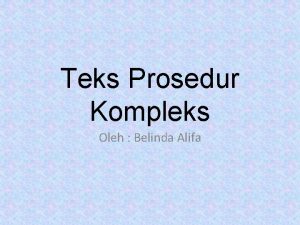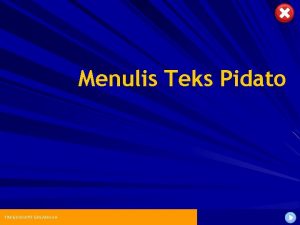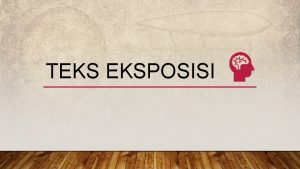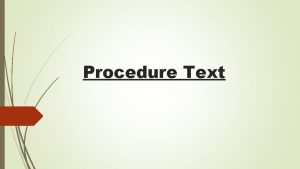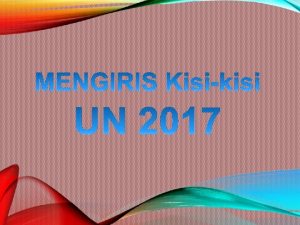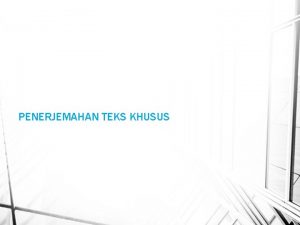TEKS Resource System 101 TEKS Resource System Agenda












































- Slides: 44

TEKS Resource System 101

TEKS Resource System: Agenda for today • What is the TEKS Resource System? • Who is the TEKS Resource System, TCMPC? • Why the TEKS Resource System? • What is Curriculum? • Components of the TEKS Resource System • T-TESS / TEKS Resource System Connection • Questions

What is the TEKS Resource System? The TEKS Resource System: — is a comprehensive online curriculum and assessment management system developed BY Texas educators FOR Texas educators. • K – 12 Math, Science, Social Studies and Language Arts (English) • K – 5 Math, Science, Social Studies and Language Arts (Spanish) — is aligned to current Texas Essential Knowledge and Skills. — is responsive to changes from TEA and end-user feedback. The TEKS Resource System www. teksresourcesystem. net — is a synthesis of current research-based practices. — contracts with classroom teachers, curriculum experts, and ESC specialists that assist in the development, review, and revision of the system components.

Who is the TCMPC? The Texas Curriculum Management Program Cooperative: — is a Shared Service Agreement (SSA) comprised of the 20 Texas Education Service Centers. — is the governing body for the TEKS Resource System — includes the State Development Team which consists of 12 Texas educators and 5 technical support staff who coordinate the writing and reviewing of the curriculum and assessment components. Texas Curriculum Management Program Cooperative www. tcmpc. org — serves more than 750 districts and approximately 1. 6 million students. — is YOU! …. And your contributions through feedback in the system and through ESCs.

The Texas Education Service Centers


Why The TEKS Resource System? New Teachers & Students New Graduation Requirements New TEKS Ongoing changes in Texas Education Additional Standards (ELPS & CCRS) New Assessment (STAAR)


Research Marzano’s research on school effectiveness shows that the development of a guaranteed and viable curriculum provides the greatest impact on student achievement. Marzano, R. J. (2003). What works in schools: Translating research into action. Alexandria, VA: Association for Supervision and Curriculum Development


The Texas Essential Knowledge and Skills THE TEKS are: Expectations for Student Learning THE TEKS alone are NOT The Curriculum State Law Skills and Content (Facts) A Framework for Curriculum www. bestppt. com 12

Standards IN Explained Grouped Sequenced Curriculum www. bestppt. com 13

The Texas State Board of Education adopts standards (TEKS) that the TEKS Resource System transforms into a meaningful curriculum that defines understandings and expectations, thus providing teachers a common foundation and starting point for the instructional planning process. Teachers start here TEKS Resource System Standards

Backward Design in Nine 1. Start with the state standards 6. Use curriculum and assessment components to design instruction that builds students’ knowledge & skills toward the unit learning outcomes 7. Use data from formative and summative assessments to inform and plan additional instruction 2. Define and clarify the specifics of the standards. (VAD/TCD/ETCD) 5. Design tools that measure the depth of understanding that a student should have as the unit progresses (PAs, Assessment Items, Formative Spiral Items) 8. Repeat the previous two steps 3. Group and sequence standards in meaningful ways to establish overarching understandings that shape the unit layout of the course (YAG/IFD initial phase) 4. Group standards within the unit to establish unit understandings and performance assessments that connect to the overarching understandings. (YAG/TVD/IFD final phase) 9. Administer state and/or district created summative assessments

ALIGNMENT WRITTEN Educational Standards 1 TAUGHT CURRICULUM 2 TESTED Educational Standards 3

Our purpose…… To positively affect instruction and assessment through a systemicallyaligned written, taught, and assessed curriculum model that promotes student achievement

TEKS Resource System Curriculum and Assessment Components − Texas Essential Knowledge and Skills (TEKS) − Instructional Focus Document (IFD) − Vertical Alignment (VAD) − Performance Assessments (PA) − TEKS Clarification (TCD) − Enhanced TEKS Clarification (ETCD) − Year at a Glance (YAG) − TEKS Verification (TVD) − Assessment Items − Resources and Tools


Vertical Alignment Document (VAD) TEKS Clarification Document (TCD) & (ETCD) TCMPC VADs present aligned TEKS with specificity across grade levels. TCDs provide specificity for the TEKS at a particular grade level or course. ETCDs include enhanced specificity for the TEKS at a particular grade level or course VADs, TCDs and ETCDs define the rigor and content of the TEKS and identify Readiness and Supporting Standards Let’s Navigate!

ELAR VADS § § § K– 12 Reading Writing Oral & Written Conventions Research Listening & Speaking N/A K– 12 K-8 Algebra II Geometry Mathematical Models with Application Precalculus Mathematics Science Social Studies TCDs and ETCDs (Math Only) K– 2 3– 5 6– 8 K– 3 4 & 7 5, 8 and U. S. History Integrated Physics and Chemistry Biology Chemistry Physics Environmental Systems K– 8 Economics World History U. S. History World Geography


Year-at-a-Glance (YAG) TCMPC The Year at a Glance presents a quick snapshot of the entire year’s instructional plan. Let’s Navigate!

Year-at-a-Glance and the school calendar 6 weeks = 30 instructional days TEKS Resource System 6 Weeks = units suggest duration of 20 -25 TEKS Resource System sequence intentionally allows for flexibility

Let’s Think About It! Example: § 1 st six weeks August 24 th – October 2 nd Ø 30 calendar days Mondays – Fridays o o Subtract 1 holiday (Labor Day) Subtract 1 day for Homecoming activities Subtract 1 day for early release Subtract 2 days for district BOY assessment § Total Instructional Days = 25 True Days

YAG: Calendar Reconciliation Tool

TEKS Verification Document (TVD) TCMPC The TEKS Verification Document ensures that all of the state standards are fully accounted for in the TEKS Resource System curriculum. Educators can consult the TVD to find out how often an SE might be taught, allowing for deeper understanding and/or targeted instruction for different parts of the SE. Let’s Navigate!


Instructional Focus Document (IFD) TCMPC Instructional Focus Documents logically group the specified standards into coherent units of instruction. Provides a bridge between curriculum, assessment, and instruction Let’s Navigate!


Content Specific Resources TCMPC Resources designed specifically to support curriculum and assessment in each of the content areas. Let’s Navigate!


Assessment TCMPC Let’s Navigate!



How To guides, videos, FAQs Revisions to all docs within the system Content updates, Annual Conference info, etc.


TEKS Resource System & T-TESS

T-TESS Rubric Overview Planning Instruction Learning Environment Professional Practices & Responsibilities Standards & Alignment Achieving Expectations Classroom Environment, Routines, & Procedures Data & Assessment Content Knowledge & Expertise Managing Student Behavior Goal Setting Knowledge of Students Communication Classroom Culture Professional Development Activities Differentiation Monitor & Adjust Professional Demeanor & Ethics School Community Involvement



T-TESS Domain T-TESS Dimension 1. 1 Standards & Alignment: The teacher designs clear, well-organized, sequential lessons that reflect best practice, align with standards and are appropriate for diverse learners 1. 2 Data & Assessment: The teachers use formal and informal methods to measure student progress, then manages and analyzes student data to inform instruction 1. 3 Knowledge of Students: Through knowledge of students and proven practices, the teacher ensures high levels of learning, social-emotional development and achievement for all students 1. 4 Activities: The teacher plans engaging, flexible lessons that encourage higher-order thinking, persistence and achievement 2. 1 Achieving Expectations: The teacher supports all learners in their pursuit of high levels of academic and social-emotional success 2. 2 Content Knowledge & Expertise: The teacher uses content and pedagogical expertise to design and execute lessons aligned with state standards, related content and student needs 2. 3 Communication: The teacher clearly and accurately communicates to support persistence, deeper learning and effective effort 2. 4 Differentiation: The teacher differentiates instruction, aligning methods and techniques to diverse student needs 2. 5 Monitor & Adjust: The teacher formally and informally collects, analyzes and uses student progress data and makes needed lesson adjustments

T-TESS Domain T-TESS Dimension 1. 1 Standards & Alignment: The teacher designs clear, well-organized, sequential lessons that reflect best practice, align with standards and are appropriate for diverse learners 1. 2 Data & Assessment: The teachers use formal and informal methods to measure student progress, then manages and analyzes student data to inform instruction 1. 3 Knowledge of Students: Through knowledge of students and proven practices, the teacher ensures high levels of learning, social-emotional development and achievement for all students 1. 4 Activities: The teacher plans engaging, flexible lessons that encourage higher-order thinking, persistence and achievement 2. 1 Achieving Expectations: The teacher supports all learners in their pursuit of high levels of academic and social-emotional success 2. 2 Content Knowledge & Expertise: The teacher uses content and pedagogical expertise to design and execute lessons aligned with state standards, related content and student needs 2. 3 Communication: The teacher clearly and accurately communicates to support persistence, deeper learning and effective effort 2. 4 Differentiation: The teacher differentiates instruction, aligning methods and techniques to diverse student needs 2. 5 Monitor & Adjust: The teacher formally and informally collects, analyzes and uses student progress data and makes needed lesson adjustments

The component I would use to…… is …………… verify that all state standards are accounted for TVD begin a study of grade-level TEKS supplement curriculum and assessment components understand what is taught in each unit assess bundled standards within a unit assess individual standards VAD/TCD/ ETCD Resources vertically track the depth and complexity of the TEKS VAD plan for instruction IFD view the year…. in a snapshot YAG IFD PAs Assessment Item

Questions Gena Billeaud Bilingual Coordinator TEKS Resource System gena. billeaud@esc 13. txed. net 45
 Agenda sistemica y agenda institucional
Agenda sistemica y agenda institucional Teks resource system yag
Teks resource system yag Resource loading vs resource leveling
Resource loading vs resource leveling Perbedaan resource loading dan resource levelling
Perbedaan resource loading dan resource levelling Ubahlah kutipan cerpen berikut menjadi naskah drama
Ubahlah kutipan cerpen berikut menjadi naskah drama Struktur teks laporan asil observasi ana
Struktur teks laporan asil observasi ana Tujuan utama merevisi teks hasil observasi adalah . . . .
Tujuan utama merevisi teks hasil observasi adalah . . . . Teks tersebut merupakan jenis teks
Teks tersebut merupakan jenis teks Operating system 101
Operating system 101 Human resource management system project ppt
Human resource management system project ppt Nasa firms fire
Nasa firms fire Fire information for resource management system
Fire information for resource management system Fire information for resource management system
Fire information for resource management system Resource patient management system
Resource patient management system Hrmis meaning
Hrmis meaning Resource management in distributed system
Resource management in distributed system Designing of hris
Designing of hris Definition of hris
Definition of hris Renee blackmon
Renee blackmon Cfa resource
Cfa resource Accountability and resource management system
Accountability and resource management system Resource ordering and status system
Resource ordering and status system Fire information for resource management system
Fire information for resource management system Rtlt fema
Rtlt fema Teacher resource system
Teacher resource system Preseason coaches meeting agenda
Preseason coaches meeting agenda Meet and greet agenda
Meet and greet agenda Background color
Background color Inoculation marketing
Inoculation marketing Football meeting agenda
Football meeting agenda Kick off møde agenda
Kick off møde agenda Agenda web tag questions
Agenda web tag questions Retirement agenda
Retirement agenda What is a cft meeting
What is a cft meeting Tonight's agenda
Tonight's agenda Agenda.q class
Agenda.q class Modals exercise
Modals exercise What does smh mean
What does smh mean The wieners agenda
The wieners agenda Teori agenda setting
Teori agenda setting Tender briefing agenda
Tender briefing agenda Teambuilding workshop agenda
Teambuilding workshop agenda Meeting objective
Meeting objective What is theatre with a specific agenda
What is theatre with a specific agenda Graduation meeting
Graduation meeting

